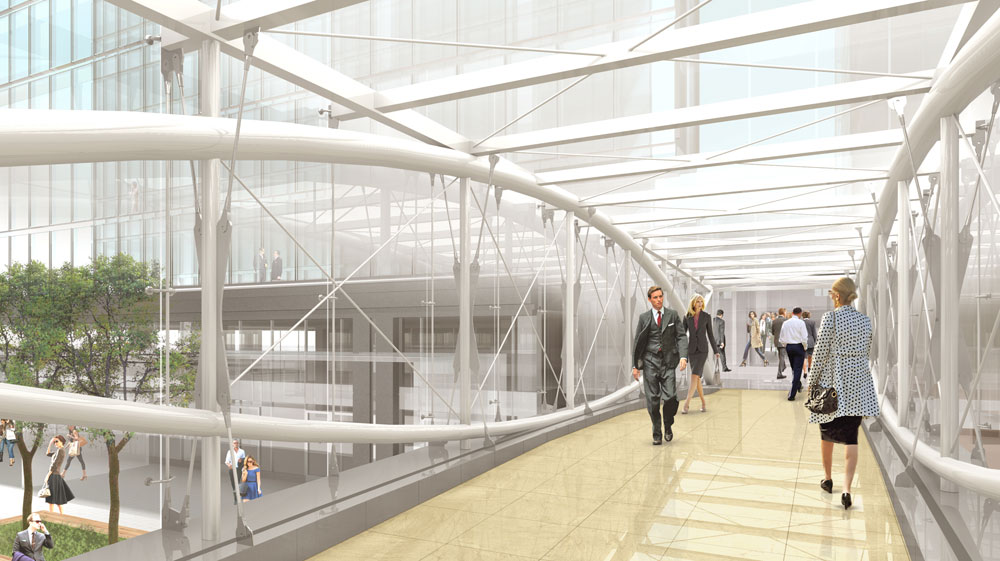
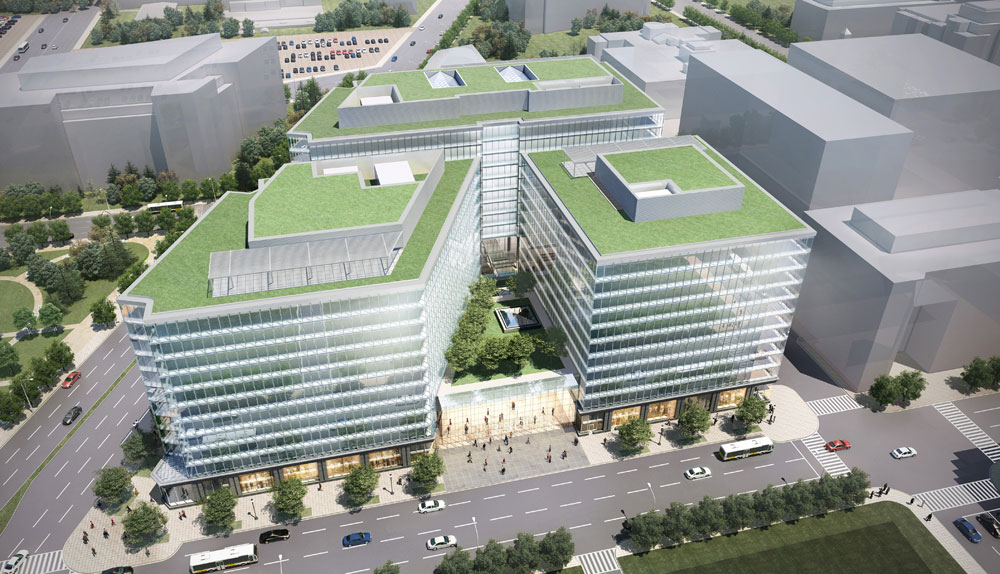
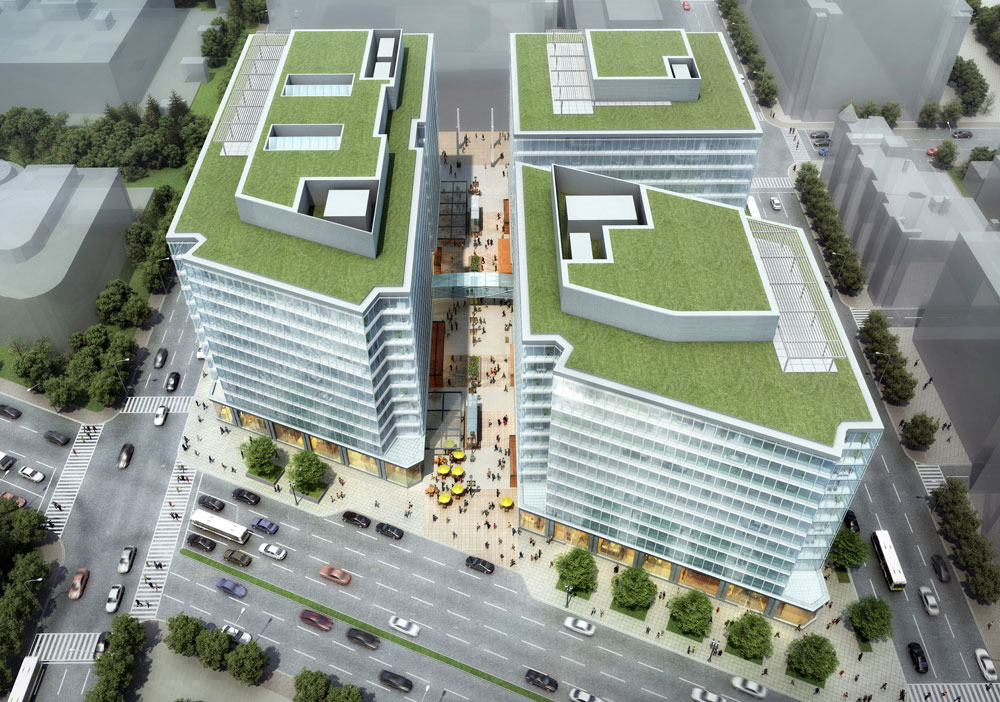
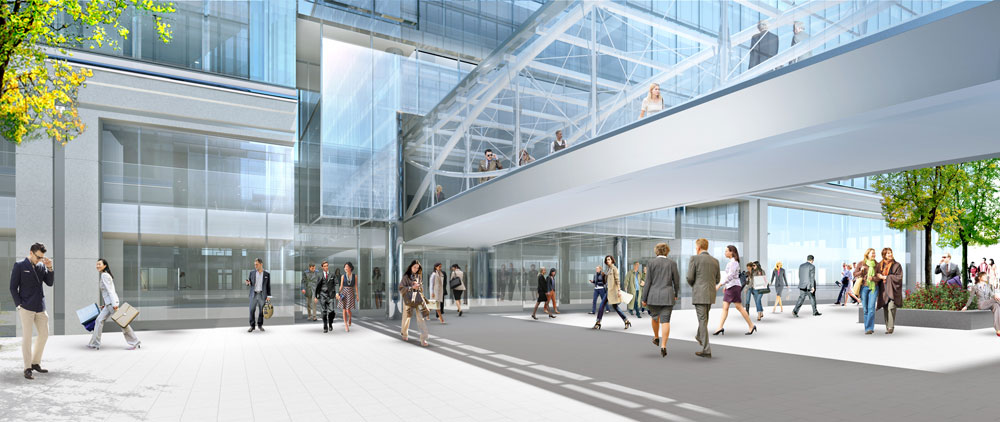
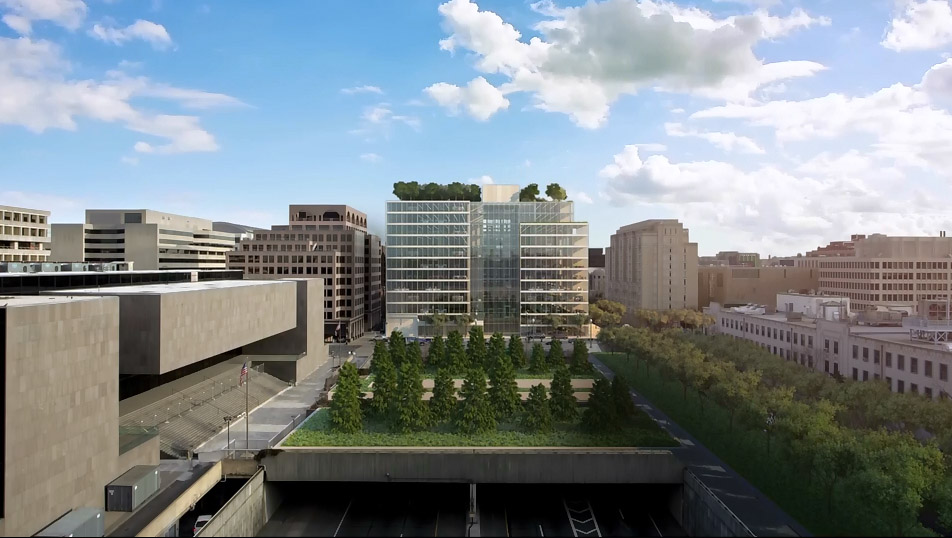
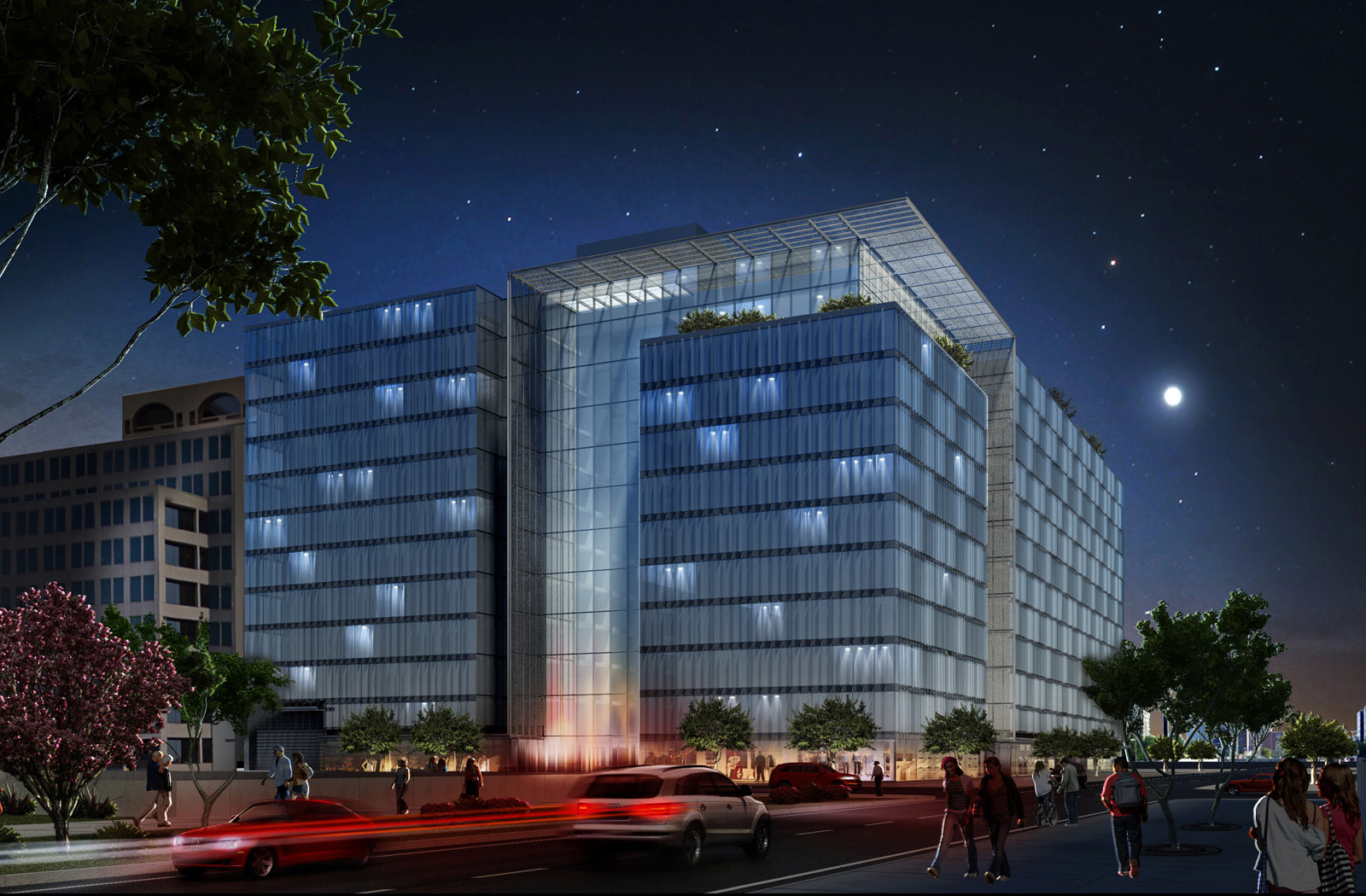
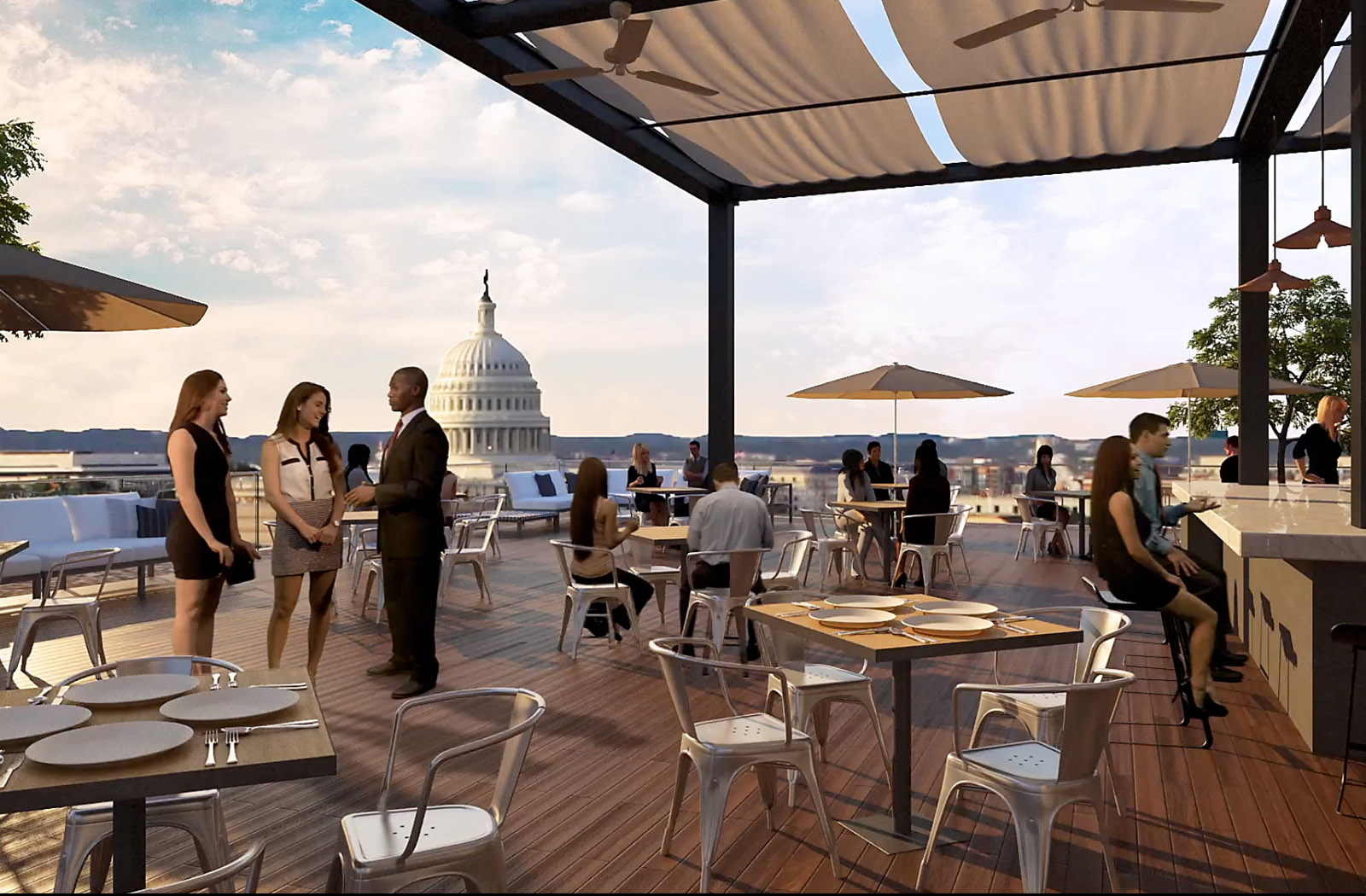
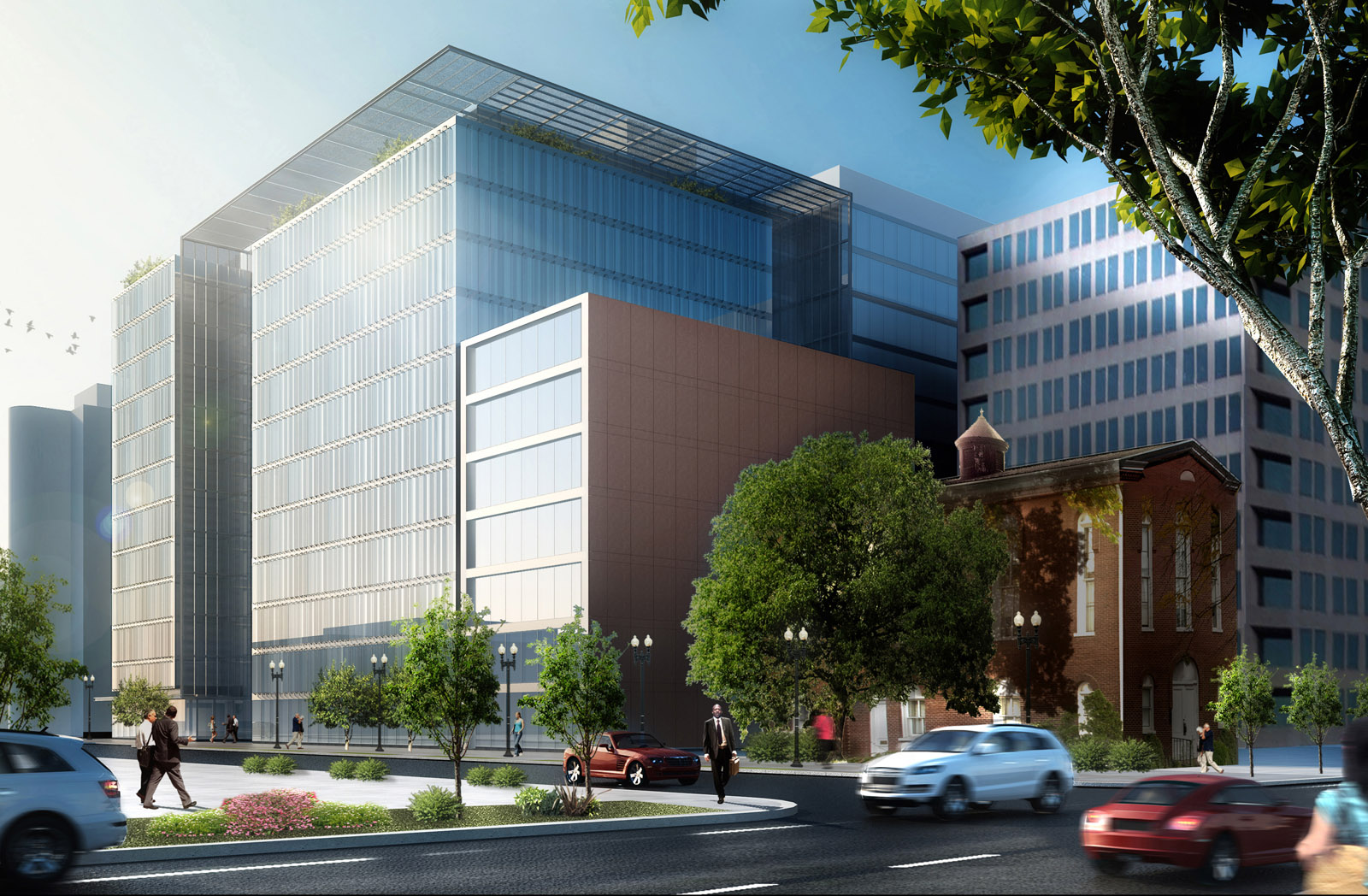
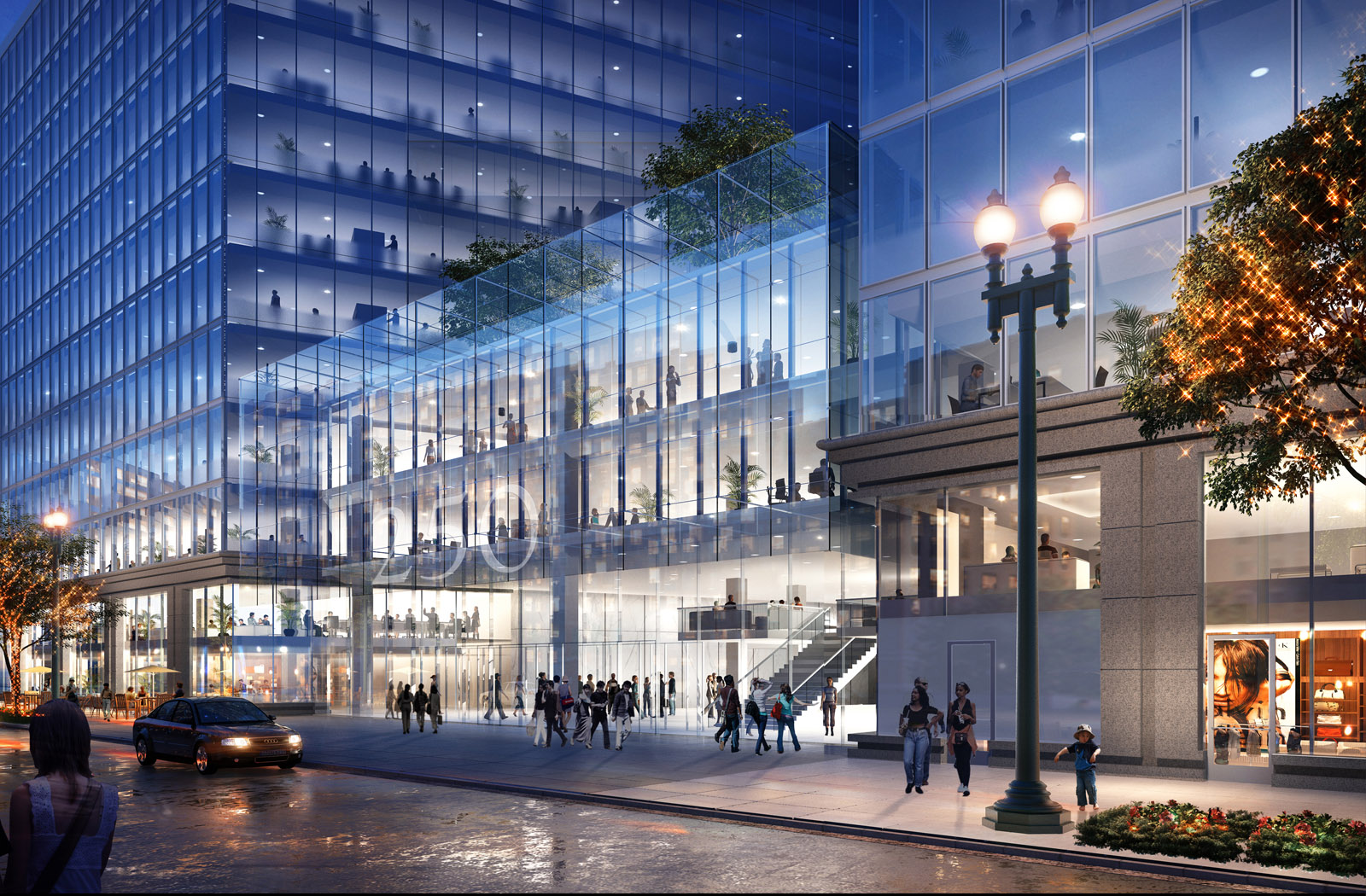
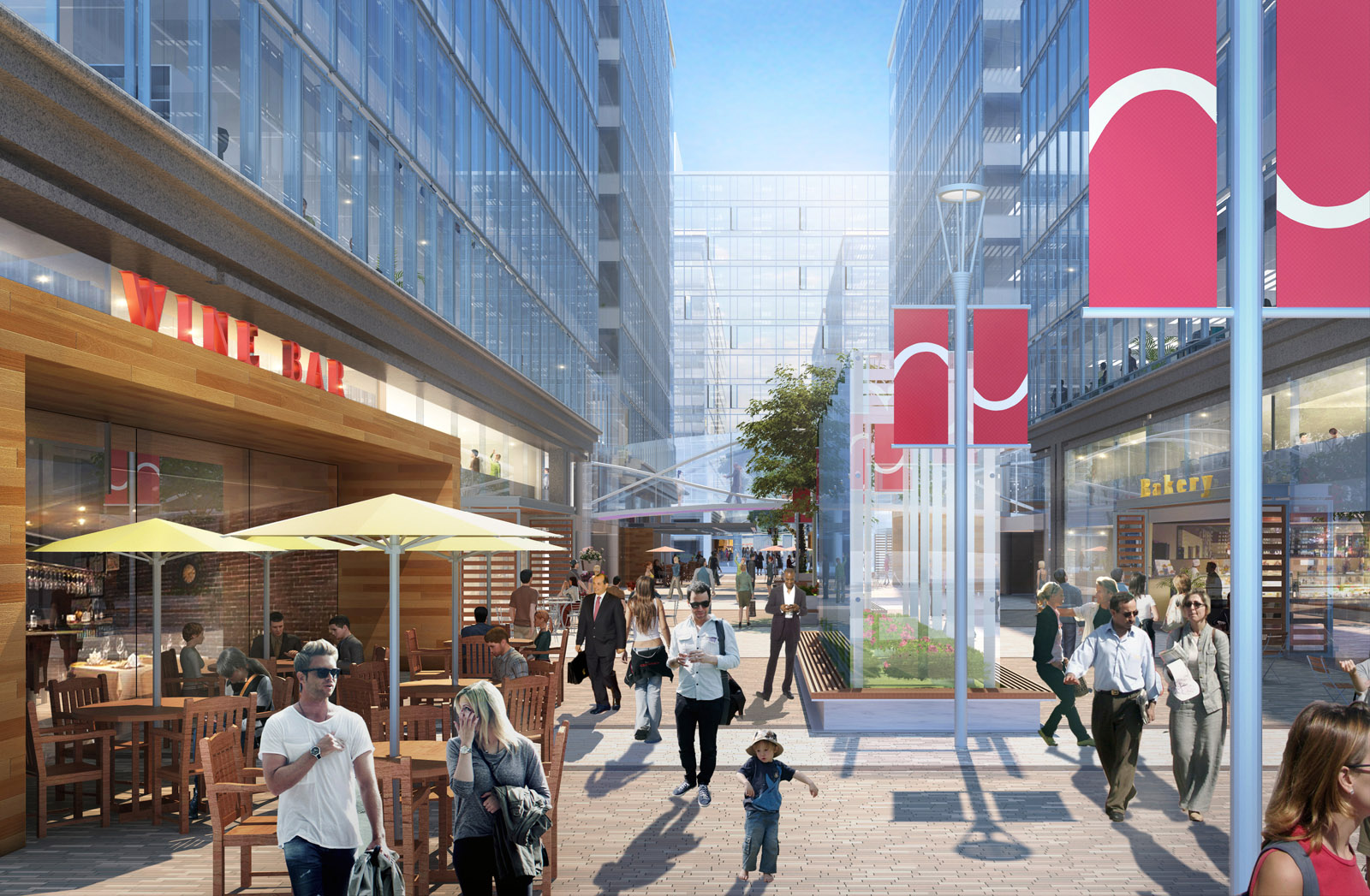
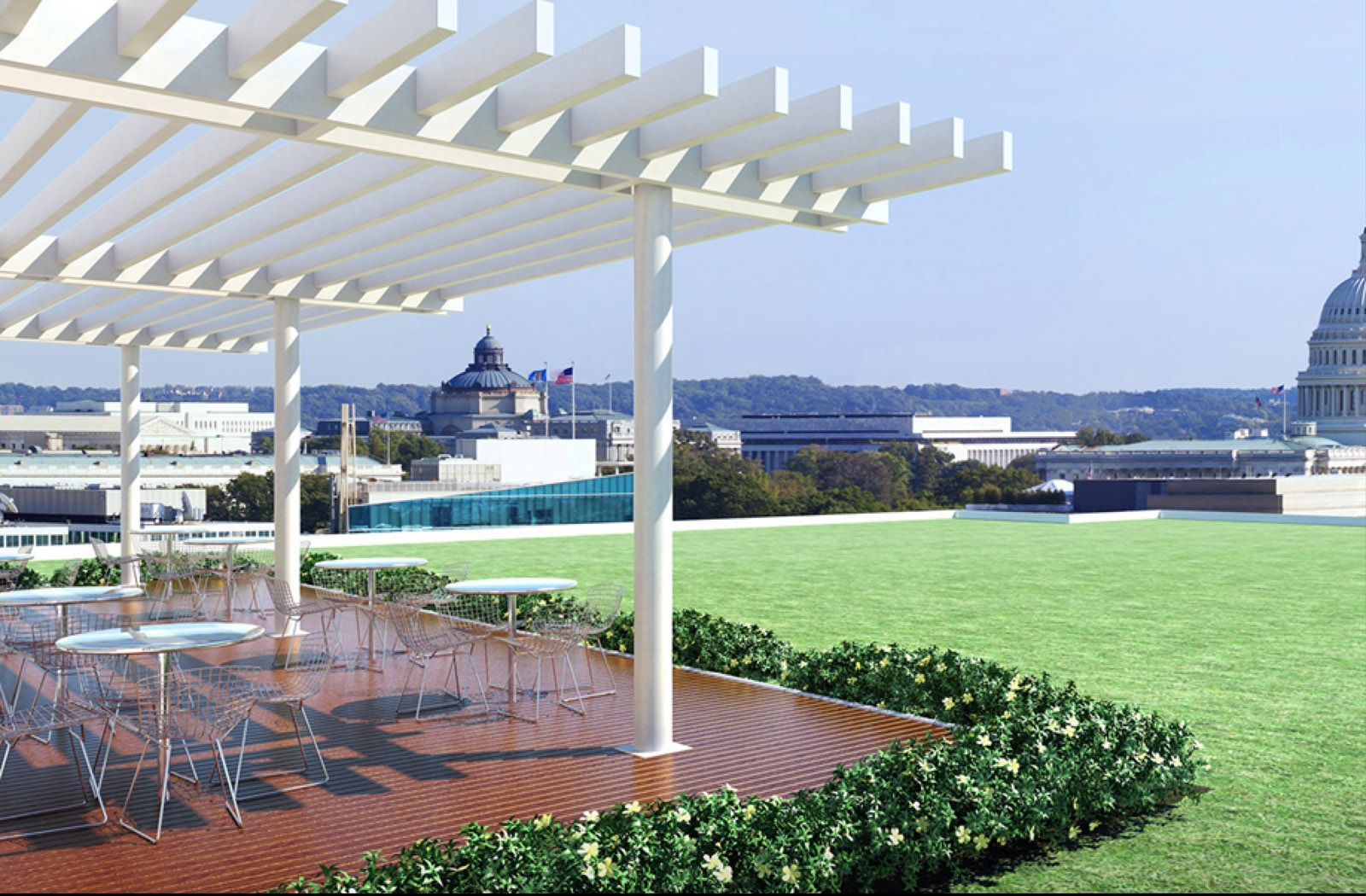
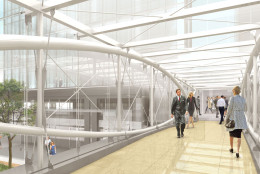
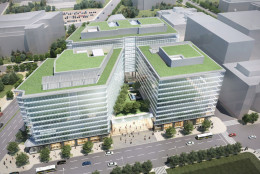
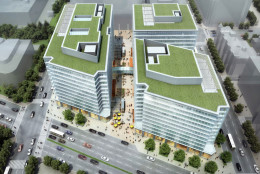
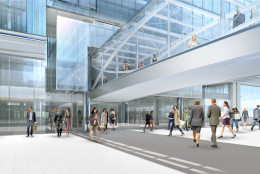
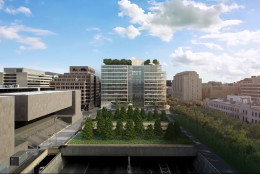
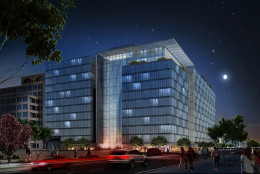
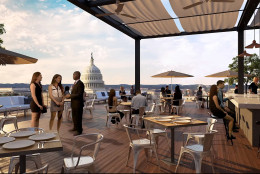
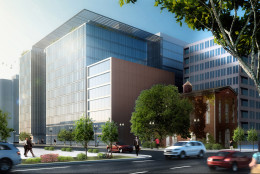
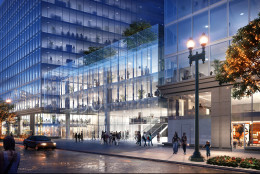
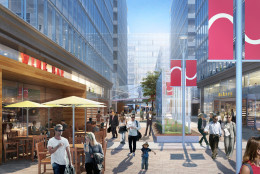
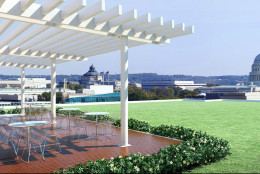
In roughly two years, the scar downtown will have finally healed.
Executives with Property Group Partners will join Mayor Muriel Bowser and D.C. Del. Eleanor Holmes Norton on Tuesday to ceremonially break ground on Capitol Crossing, a $1.3 billion project that will reconnect the east end of downtown with Capitol Hill, via a massive platform to be constructed atop Interstate 395.
Capitol Crossing will transform seven acres located largely above the freeway into a three-block, 2.2 million-square-foot complex of five-buildings — four office and one residential — 70,000 square feet of retail, pedestrian plazas and a 1,100-space below grade parking garage. Key to the project, which is planned to deliver in full in 2019, is the platform that will be constructed between E Street and Massachusetts Avenue Northwest. Work on that is slated to begin in earnest in late July.
The 247,000-square-foot development site is bounded by Massachusetts Avenue and Second, Third and E streets NW, on either side of the Center Leg Freeway. The platform will reconnect F and G streets, between Second and Third streets, to the L’Enfant street grid, finally closing what some call “the scar downtown.”
While utility relocation and site prep has been underway for a year, Tuesday’s event signifies “the beginning of the heavy foundation work that’s going to take place in the highway,” said Robert Braunhohler, PGP’s regional vice president. The highway will remain open even as caissons are buried in the median of I-395 and on both sides of the travel lanes, and a deep slurry wall is constructed on the west side of the highway, forming the wall of the parking garage.
There will be lane and ramp closures and other disruptions especially during off-peak hours, but shutting down the freeway was a nonstarter.
The idea of decking over Interstate 395 dates to 1989, when then-Mayor Marion Barry awarded rights to develop on top of the highway to developer Conrad Monts and his Washington Development Group. That deal ended in litigation and a healthy payout to Monts, who died in December 2009. PGP, then called Louis Dreyfus Property Group, resurrected the project in 2006 — four mayoral administrations ago.
PGP has yet to sign an anchor tenant, but it is moving forward with the construction of its first office building, 200 Massachusetts Ave. NW, which it expects to deliver in 2017. Jeffrey Sussman, PGP president, said discussions are heating up with a number of tenants, both large and small, in addition to retailers.
“Up until I think about nine or 10 months ago, it had been a tough go getting the commercial community to realize that it’s going ahead and it’s underway,” Sussman said of the project. “I think that has sunk in now.”
While he declined to name those potential tenants (including a likely deal with the Italian gourmet food emporium Eataly), Sussman said, “The rumors have a large element of truth to them.”
In addition to the platform and building construction, PGP also will demolish and rebuild the Holy Rosary Church annex and rectory, which currently blocks F Street at the freeway, and relocate historic Adas Israel Synagogue, currently at Third and G streets. Those jobs will not begin until at least 2016.
Capitol Crossing, its developer forecasts, will create 4,000 construction jobs and 8,000 permanent jobs and generate $40 million in new property tax revenue at buildout. It will be constructed “beyond LEED Platinum” for sustainability — with parking garage exhaust vented and cleaned using large plants known as “EcoChimneys,” 90 percent of stormwater runoff captured in cisterns, and heat and power generated via a cogeneration plant.
PGP paid the District $11 million in December 2012 for the right to build atop I-395, and will make additional payments totaling as much as $109 million over time.






